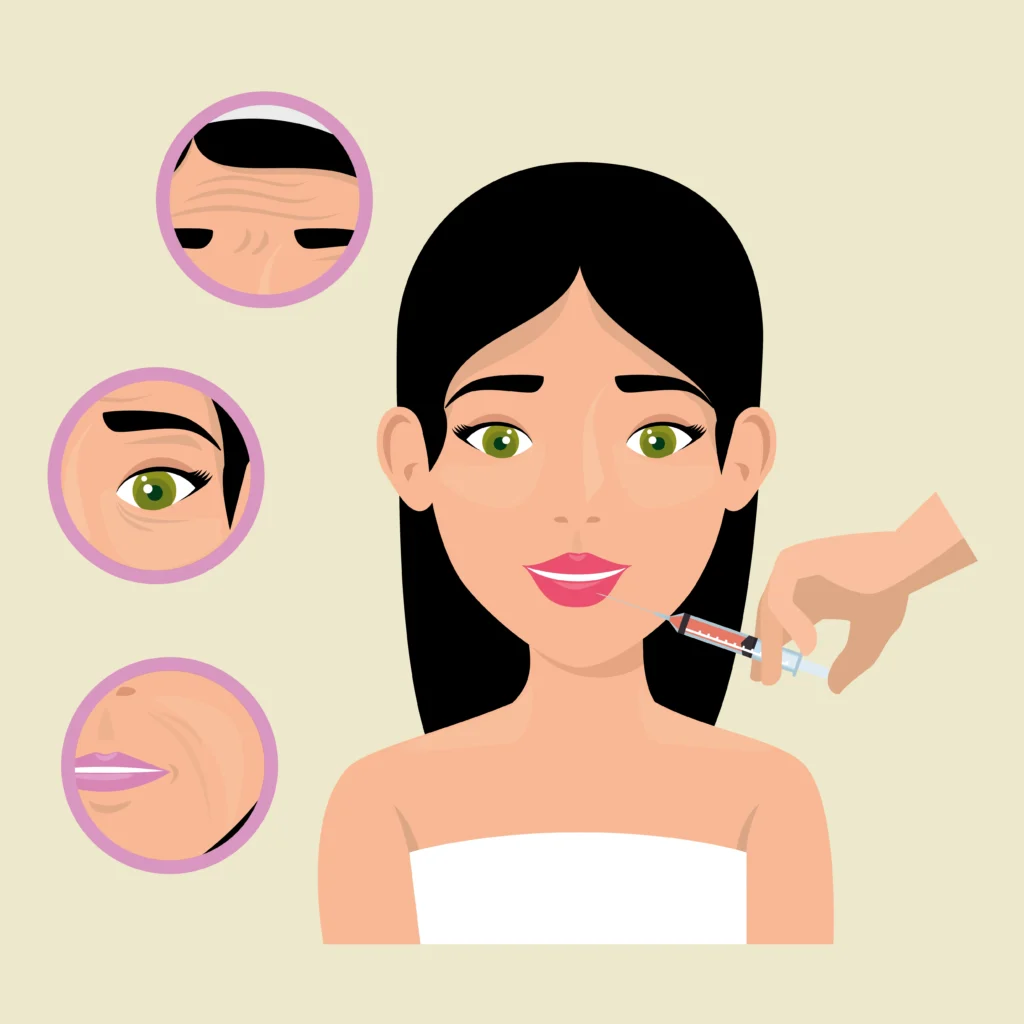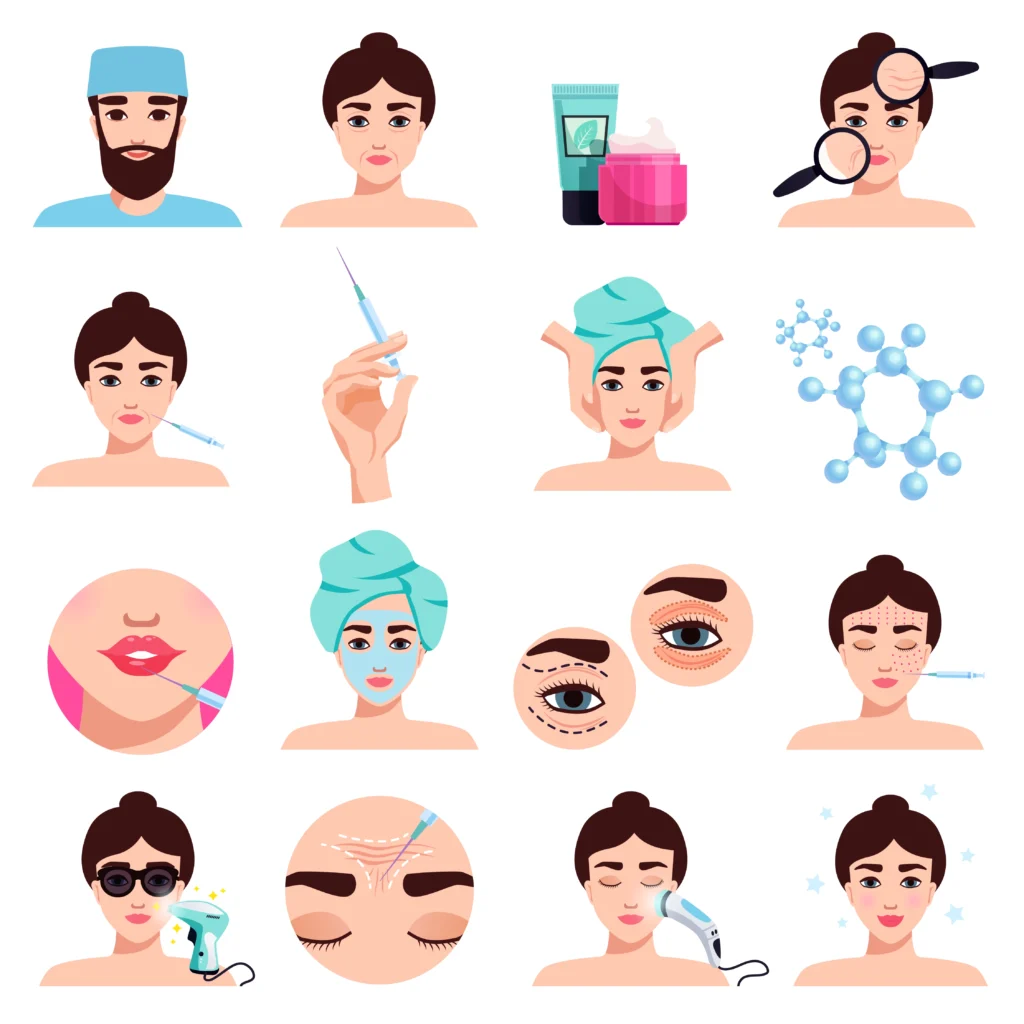Botox Under Eyes: All You Need To Know
Emma Brooks December 5, 2022
Botox under eyes comes into effect when botulinum toxin, also known as Botox, is used as a drug that lessens the muscular spasms that result in wrinkles. In addition to treating forehead wrinkles and crow’s feet around the eyes with neurotoxins, it is also effective for treating dark circles under the eyes. When appropriately administered in the under-eye area, Botox can assist in reducing the appearance of texture and wrinkles.
The use of Botox under the eyes for cosmetic purposes hasn’t received FDA approval in the United States. Its usefulness and adverse effects haven’t received much scientific attention.

How Does Botox Function?
Injections of Botox can minimize wrinkles. Human albumin, sodium chloride, and type A botulinum toxin are the three major components in a vial of Botox. The most effective element is botulinum toxin A, the active ingredient.
Botox stops the nerve signals that cause a particular muscle to contract when injected into muscles[1]. The muscle is immobile, which lessens the visibility of wrinkles.
Botox can only smooth out creases in moving facial regions. Doctors typically apply it to the glabellar lines, also known as frown lines between the eyebrows, and to forehead wrinkles and crow’s feet at the sides of the eyes.
In addition, several medical disorders, such as migraines and overactive bladder, are now being treated with botox.
Under Eye Botox
Under-eye Botox, often known as “jelly roll Botox,” involves injecting Botox where the aforementioned “jelly roll” muscle protrudes from your under-eye region[2]. Although the idea may seem strange, it is used to repair creases around the crow’s feet. It is normally injected using a fine-gauge insulin needle in the bottom part of the eye-circling muscle. As with most neuromodulators, a very low dose is given, and it lasts for around three to four months.
As mentioned earlier, the FDA has not approved Botox injections to alleviate bags or dark circles beneath the eyes in the United States. It is considered off-label use. Due to the lack of study on its application, medical professionals are unsure of its potential efficacy.
In a 2003 study, it was investigated whether Botox injections helped lessen the appearance of wrinkles around and under the eyes[3]. Nineteen of the participants were female. Compared to those who only received injections in their lower eyelids, those who received them in the crow’s feet and lower eyelids area were more likely to report positive results.
These findings imply that Botox injections can help decrease wrinkles and bagginess by giving the lower eyelid a fuller, plumper appearance.
Additionally, the researchers evaluated the results of various doses of Botox in the lower eyelid. Patients who received eight units of Botox had the best outcomes but also experienced the most severe adverse effects.
There is only a few other study on Botox injections under the eyes right now.
Botox Under Eyes Cost
The price of Botox can vary depending on who administers the injections. The cost of Botox varies by location and by the doctor. Botox costs include the doctor’s time, the office space, as well as any supplies used.
According to the American Board of Cosmetic Surgery, Botox injections cost an average of $200 to $1,400 in the United States. Additionally, the cost varies according to the clinic’s location[4].
Before requesting Botox injections, a person might seek a price estimate. Additionally, a doctor or other medical professional should be able to predict how much Botox will be used and how long the injections will take.
How To Prepare For Botox Under Eyes Before And After
You should abstain from alcohol 24 hours before your appointment and stop taking any blood-thinning medications, such as aspirin, turmeric, green tea, and supplements containing garlic, a week beforehand. This will reduce the likelihood of bruising.
Botox injections should only be performed in a doctor’s office. A dermatologist, plastic surgeon, or medical professional with specialized training in Botox injections may administer them.
Your doctor could first numb the injection location using an anesthetic. This will minimize discomfort or agony.
The absence of recovery time after injections is arguably one of Botox’s most significant advantages. Since no surgery is involved, you can resume your regular activities immediately.
Botox under-eye treatment requires very little aftercare. To reduce bruising, experts advise against rubbing the area and using ice after injections. The day following your injections, you can continue applying cosmetics to the region.
In What Time Frame Will You See Results?
According to the American Academy of Ophthalmology (AAO), Botox injections have a week to take effect before you notice any results. After three days, your facial muscles can begin to loosen up.
These effects, however, are not long-lasting. According to the American Osteopathic College of Dermatology, your Botox treatment should last four to six months. If you want to keep the effects of earlier injections after this point, you’ll need to return to your doctor for more shots.
Benefits Of Botox Under-Eye
Under-eye Botox can help lessen the look of horizontal lines that form under your eyes when you grin or squint as well as the “jelly roll” muscle that protrudes during these actions.

Negative Effects
There isn’t a comprehensive study on the safety of using Botox under the eyes because the FDA hasn’t approved it. The area is fragile, and there are a few hazards of getting Botox around the eyes, such as:
- a problem with closing the eyelids
- eye numbness and eye droop
- the lower eyelid swelling
- bleeding/bruising
- dizziness
- redness, pain, and fainting at the injection site.
Additionally, Botox could have more severe adverse effects. Consult your doctor about the following uncommon adverse effects:
- double or fuzzy vision
- breathing problems
- alterations in your voice, such as hoarseness or asymmetry in your face, or incontinence (bladder control issues)
- lack of facial muscle function swallowing issues
Call your doctor immediately if you develop any of these side effects following a Botox injection. Hives and wheezing are examples of allergy or asthma-like symptoms that could occur in the event of a severe injection reaction.
Also, Botox should not be used by nursing or pregnant women. The injections’ potential impact on your baby is unknown.
Botox injections shouldn’t be given to those who have certain chronic diseases. These illnesses include myasthenia gravis, the associated Lambert-Eaton syndrome, and amyotrophic lateral sclerosis, also known as Lou Gehrig’s disease.
In some instances, under-eye Botox can make wrinkles appear in other parts of your face, which may seem paradoxical. One of the most likely adverse effects is the development of new wrinkles in a region just beneath or next to the existing ones.
Ensure you get a thorough consultation with your doctor to determine whether you’re a good candidate or a different course of action.
Is It Effective For The Under-Eye Area?
Overall, Botox is regarded as an effective treatment for specific types of wrinkles. If you have wrinkles under your eyes, your doctor may first assess whether they are fine lines or dynamic wrinkles. The AAO claims that Botox is useless for treating fine wrinkles. Deeper, dynamic wrinkles respond better to these treatments.
Alternatives To Botox For Under Eye Bags
To avoid dark circles or under-eye wrinkles, get enough sleep. Botox beneath the eyes alternatives include at-home remedies and other injectable medicines. It is crucial to take the desired outcome into account. For instance, methods for lightening dark circles and reducing under-eye wrinkles can range significantly.
A person should first consider their routines to see whether they can be causing bags and wrinkles beneath the eyes. The following tactics could be helpful:
- Using antihistamines to address seasonal allergies that produce swollen eyes, and getting adequate sleep, generally 7 to 8 hours per night.
- Quit smoking.
- Reducing the amount of salt in the diet can make the body retain water and produce a buildup of fluid and swollen skin.
- Sleeping with the head slightly elevated.
- Limiting sun exposure and always wearing sunscreen in sunny conditions.
- The skin under the eyes can be softened and smoothed with several cosmetics. For instance, one might use a caffeine-containing eye ointment if eye puffiness is an issue. Caffeine is an ingredient used by manufacturers because it can help tighten skin and minimize puffiness. Creams explicitly designed for the under-eye area may be helpful if dark circles are a concern.
- To give the under-eye area more volume, some people utilize fillers. This entails injecting substances that might lighten the look of facial shadows and wrinkles.
- Another alternative is laser therapy. These procedures help the skin’s collagen grow, giving the appearance of tighter skin. On the other hand, Laser therapy may be highly pricey, frequently costing hundreds of dollars per session.
Conclusion
Before having botox under eyes, a person should thoroughly discuss the procedure, risks, and advantages with an experienced professional. Overall, certain facial wrinkles can be reduced with Botox cosmetics. The benefits for the under-eye region are still up for debate. Consult your doctor about your worries about wrinkling and bags in this area so you can weigh your alternatives. They might suggest Botox or yet another anti-aging procedure. If you are into professional self-care you should also check laser hair removal.
{BUTTONS}Reference
[1] Why It’s Done “Botox Injections” Mayo Foundation For Medical Education And Research, 2022
[2] Botox Use “Botox Cosmetic” La Jolla Cosmetic Surgery Centre & Medical Spa, 2022
[3] Botox Use Method “An Evaluation Of Use Of Botulinum Toxin Type A In The Management Of Dynamic Forehead Wrinkles – A Clinical Study” National Library Of Medicine, 2016
[4] Botox Treatment “What Will I Pay For Botox?” Allergan, 2021





